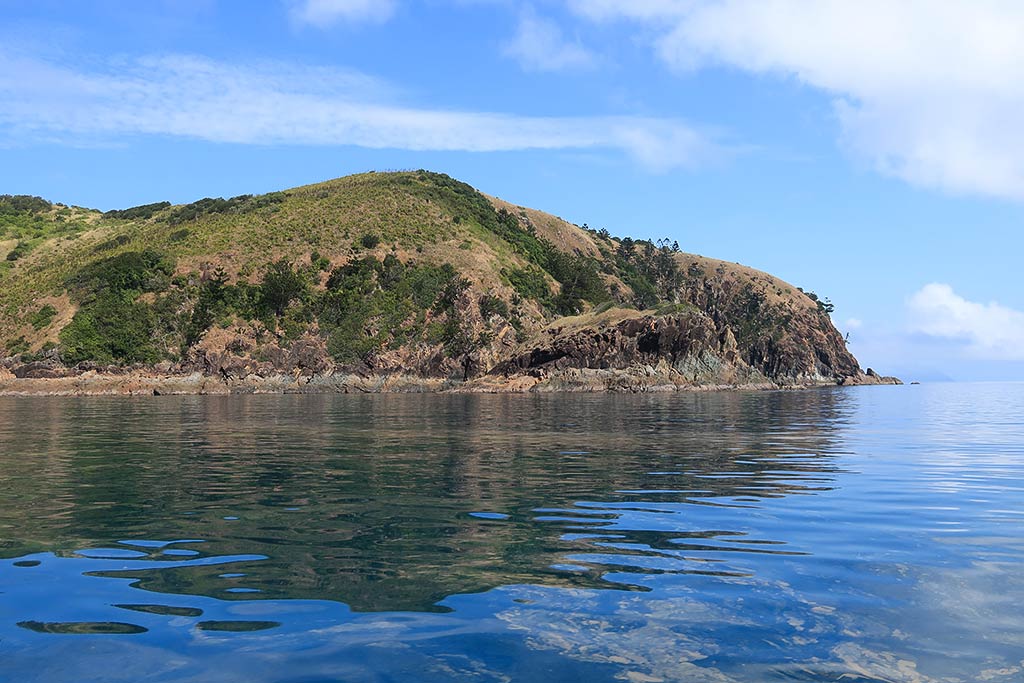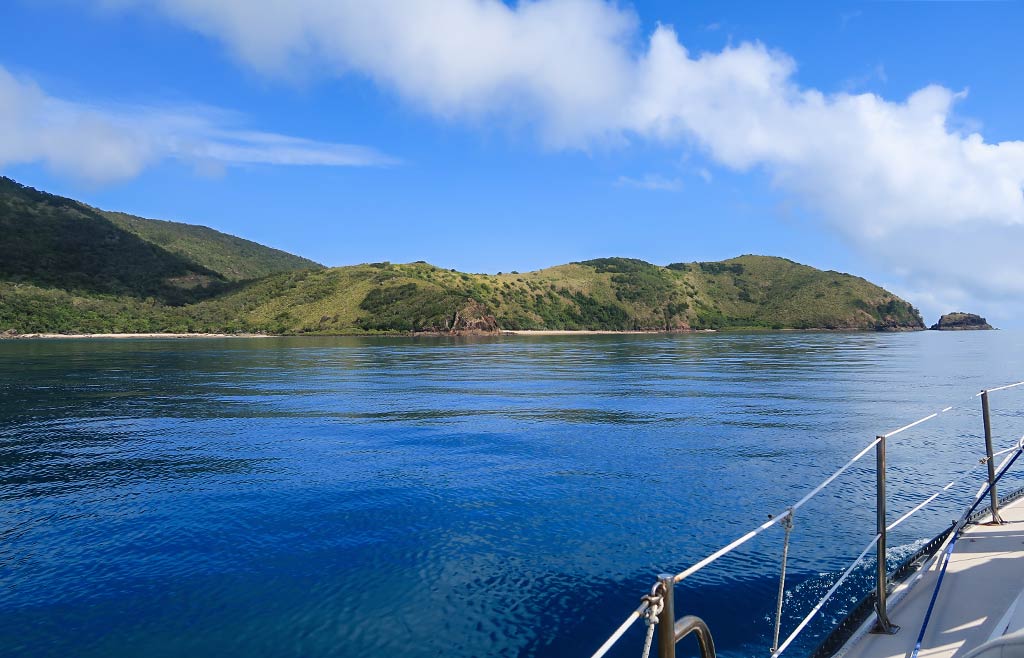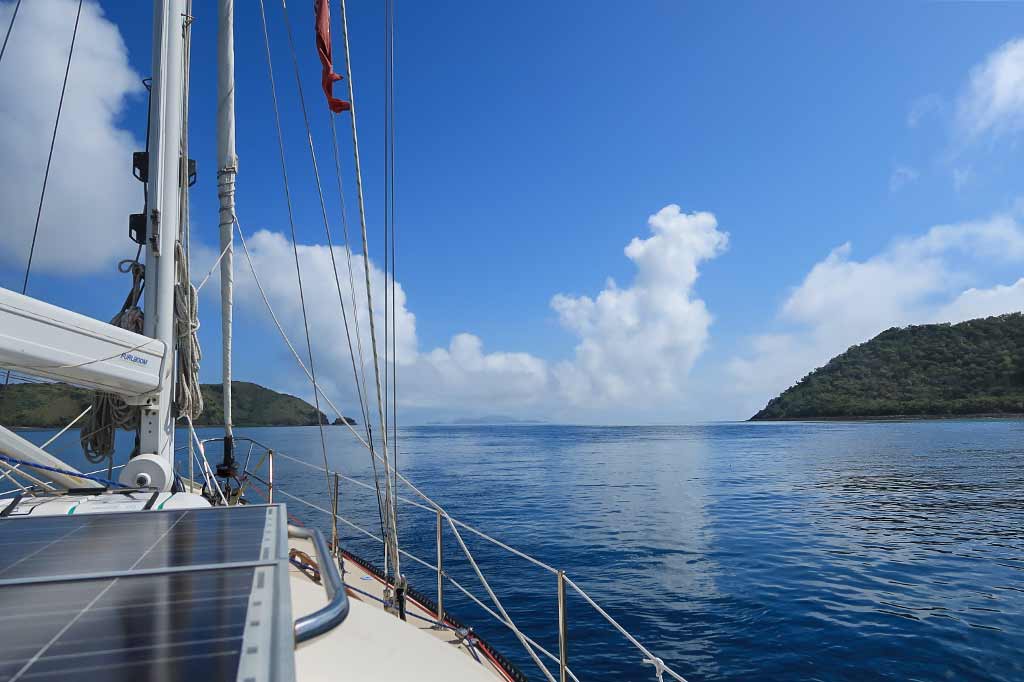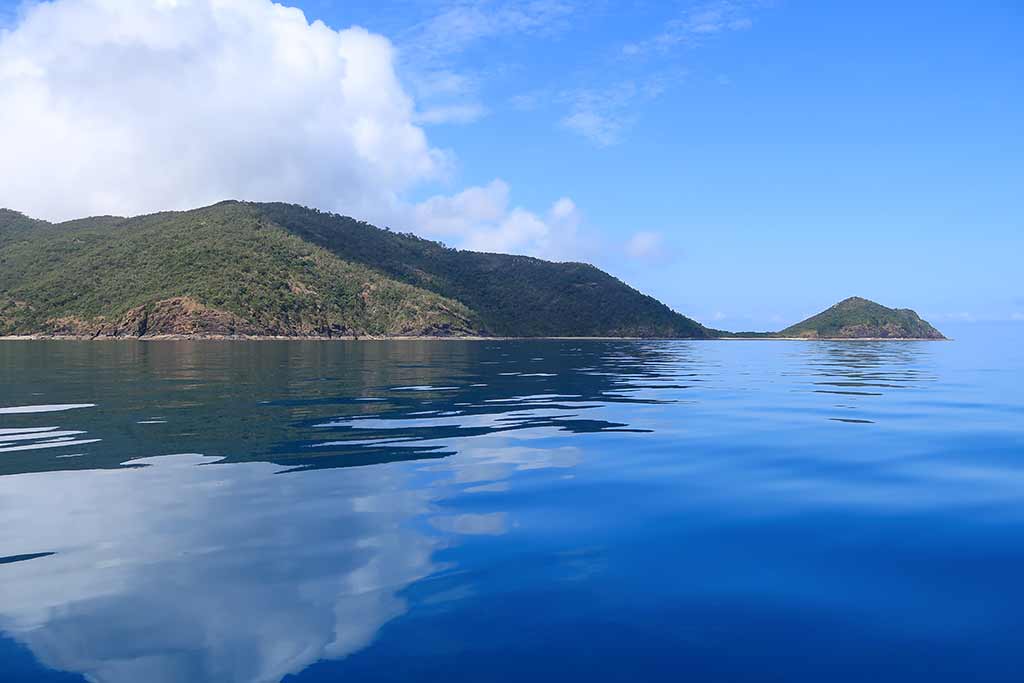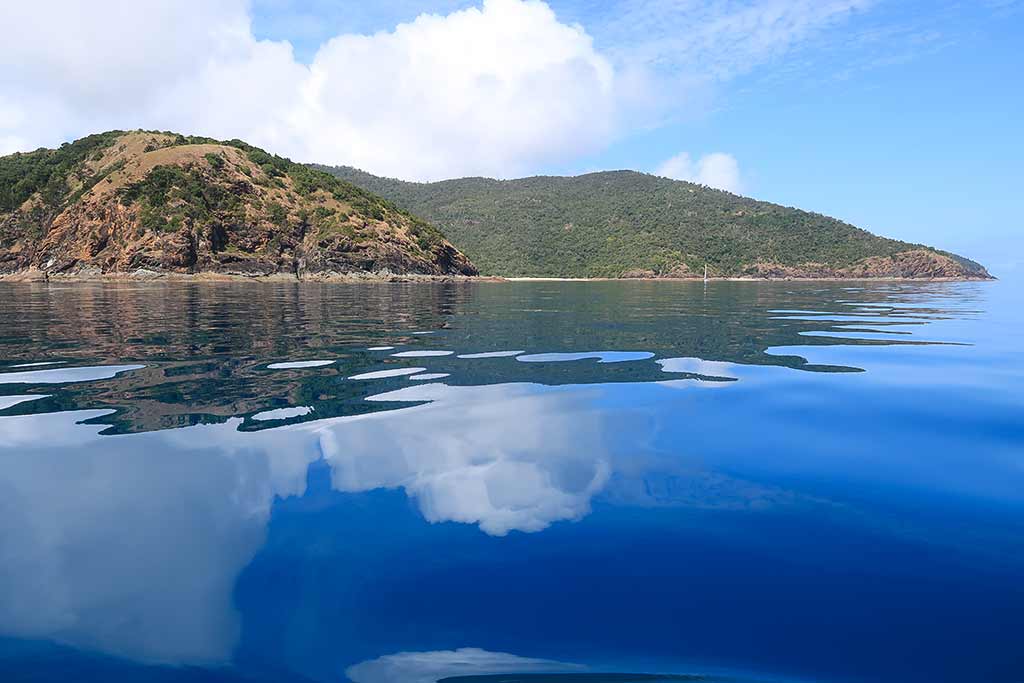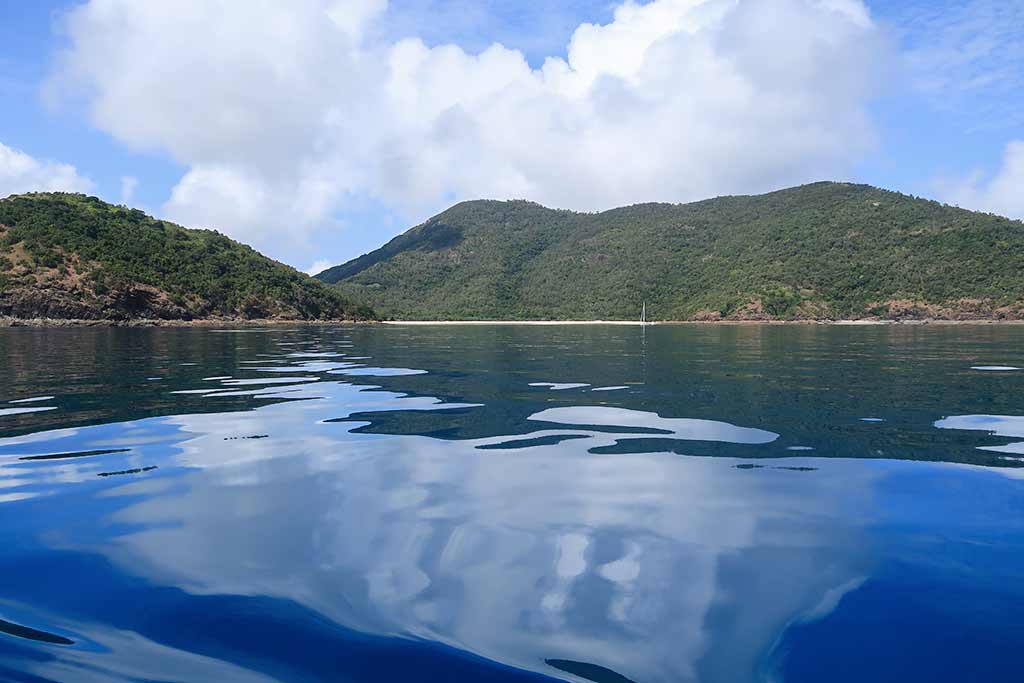Posted October 27, 2023
about September 19, 2022
This morning, we planned to head north via the Egremont Passage, the 1.5-mile-long channel between Keswick and St Bees Islands. There, I hoped to enjoy views of both islands, check out the anchorage within the passage, and then get a glimpse of Connie Bay on the north side of the island, the go-to anchorage during the trade wind season.
If we were really lucky, we might spot a whale as they often migrate through the passage. After exiting, we’d set course for Brampton Island, our next destination.
We sat outside, enjoying the morning. A flock of white cockatoos flew amid trees, squawking continuously, while pheasant coucals, not to be outdone, serenaded us with their whoop-whoop cries. An early morning misty fog had dissipated into small patches that hovered over the island. By the time we pulled up our anchor, it was sunny and the sea glassy calm.
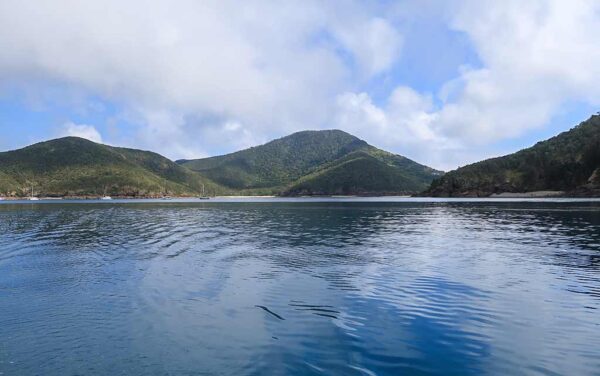
The Egremont Passage was interesting to see. It was hilly, but the vegetation seemed drier in this area. We caught sight of the small airport and noticed the boat moorings which had once been here were now gone. No matter; this area, having been bulldozed to make way for the runway, wasn’t particularly attractive.
Further up the channel it was much nicer. There was an anchorage and possibly public moorings there, but it was hard to tell. The issue with anchoring here is the current running through the passage can be very strong, posing its own set of challenges. It would really be preferable to be on a mooring.
Below are a few photos with views of Keswick Island, taken along the Egremont Passage (click on any photo to enlarge).
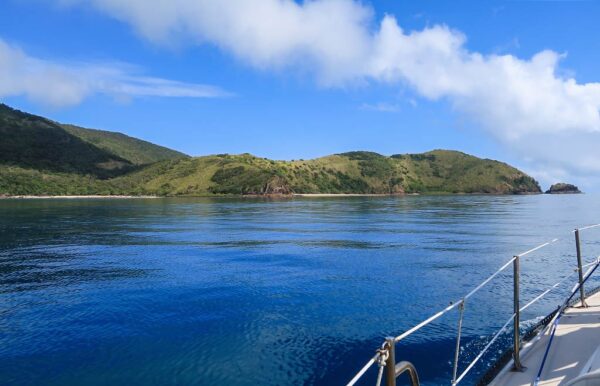
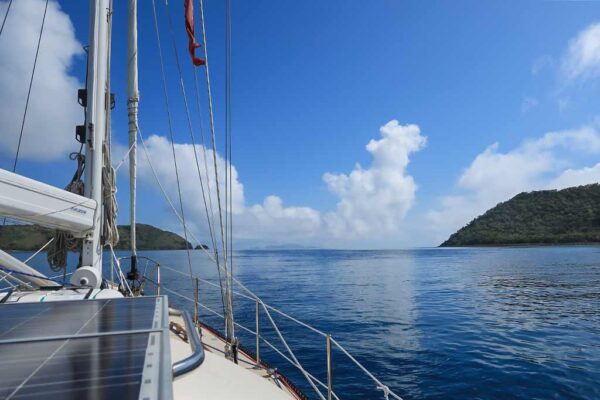
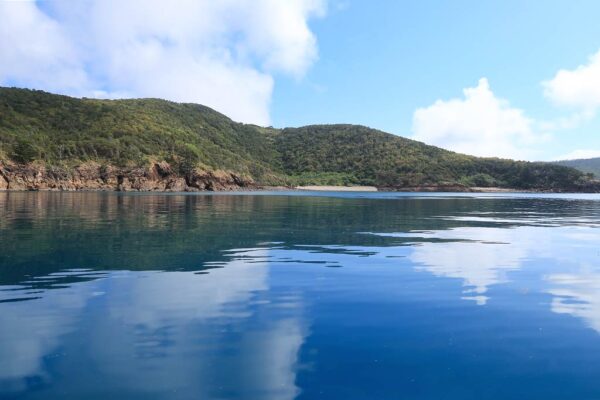
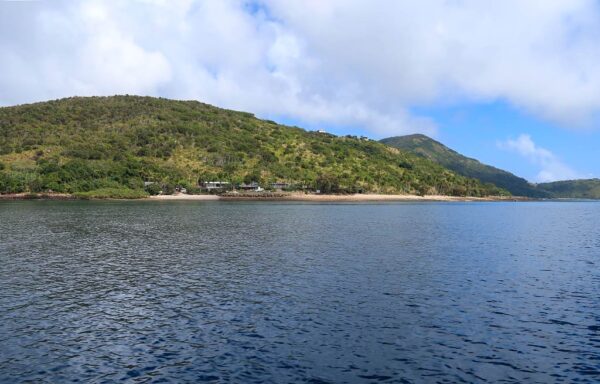
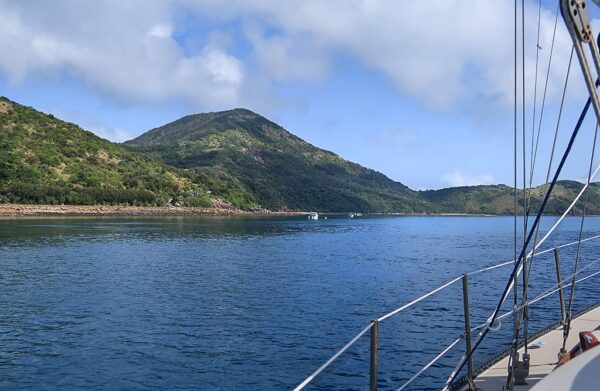
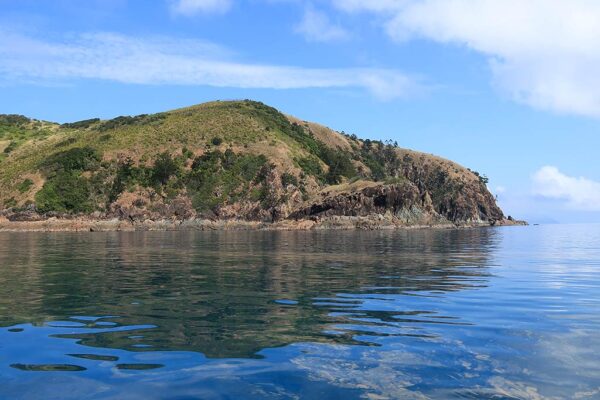
We also had good views of St Bees Island. Like Keswick, it’s home to the area’s bees which produce distinctly good honey. St Bees also happens to be loaded with koalas, but sadly there are no trails from which to spot them. On the island’s south side, remnants of a small abandoned resort sit in a state of decay. For these reasons, we decided to give St Bees a pass.
It wasn’t long before we exited the passage. Alas, no whales, but we did get a great view of Connie Bay on Keswick’s north side. With a white-sand beach and hilly landscape, this bay is quite pretty, although in my opinion not as pretty as Basil Bay.
Our guidebook stated that Connie Bay tends to be rolly in prevailing southeast-wind conditions. I don’t quite understand why as I would think its north-side location, along with protection provided by St Bees Island, would keep it calm. But I’ve learned that in Queensland’s islands, swell can be relentless about finding its way into nooks and crannies. Below, a few photos of Connie Bay and the north side of Keswick Island.
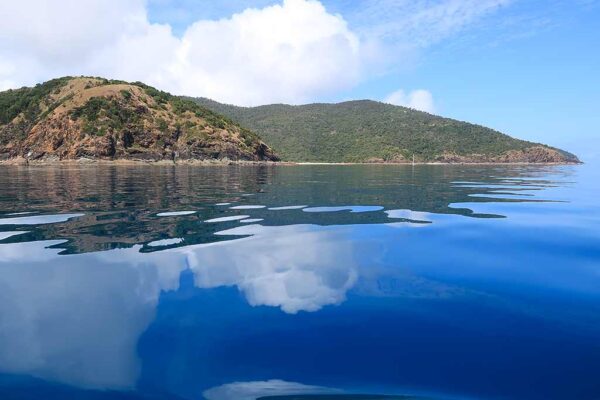
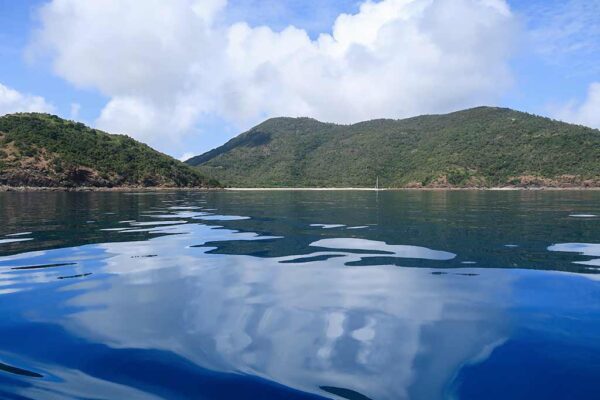
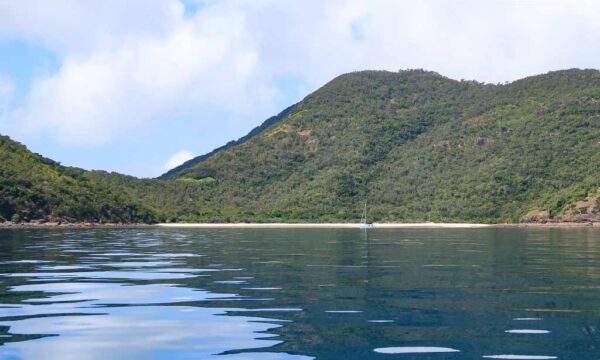
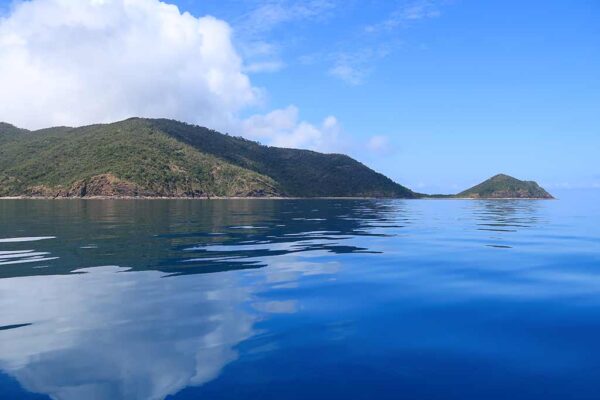
Once through the pass, we’d proceed north to the next group of islands. There was one other island in this area we’d decided not to visit: Scawfell Island. It looked lovely and has a beautiful bay, but it lay east of us and would have been a detour. At this point, with the seasonal clock ticking, we wanted to maintain our steady northbound progress.
Coming to terms with the fact that we can’t do everything and must make choices is one of the challenging aspects of cruising –Cyndi







